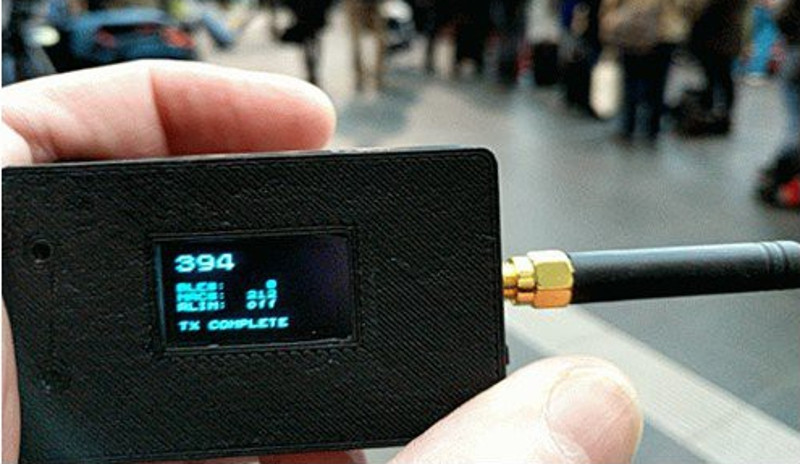We talk a lot about information security around here, but in reality it’s not at the forefront of everyone’s minds. Most people are content to walk around with their phones constantly looking for WiFi or Bluetooth connections despite the dangers. But if you’re not a black hat sort of person, you can do something like [Verkehrsrot] did and use all of these phones to do something useful and harmless.
[Verkehrsrot]’s project involves building a radio listening device in order to get an estimate of the amount of traffic in a particular area. The device polls for and detects WiFi and Bluetooth devices nearby and tallies them. For the privacy-minded, it doesn’t persistently store any information about the people or the devices that it detects. The project also runs on a variety of platforms, although you can get the whole thing up and running with little more than an ESP32 and a small lithium-ion battery.
If you’re looking for a useful way to tally the number of people in a given area, this project could be the thing for you. Not everyone keeps their WiFi and Bluetooth turned on, but even so this is still a good way to estimate. But if you need to count everyone going into a room, for example, you’ll need another way to count them.
















So…it’s just a WiFi/Bluetooth scanner, then?
I guess it’s neat that he made it into a little portable device, but seems like if you just wanted some numbers on what’s floating around you could install a scanning app on your phone.
“Why make something when you can just get it off the shelf?”
You might be on the wrong website.
Processor, WiFi hardware, antenna, battery, display, isn’t that the description of a smartphone?
So is there any reason why this can’t be done with one?
(Besides the coolness factor, and the chance to get arrested for being a terrorist running around with a remote trigger for an IED)
Seems that this is already a thing: http://www.libelium.com/products/meshlium/smartphone-detection/
This can be done on hardware costing <$20.
“although you can get the whole thing up and running with little more than an ESP32 and a small lithium-ion battery.”
Uh, I think that was the point.
You perphaps could get this running on an old used $19 Android smartphone, but…
– it depends on the phone’s wifi chip if wifi scanning is possible (must support monitor mode)
– you need to root it
– you won’t achive the same battery life as the small ESP32 paxcounter box, esp. if you want to have live display
– you don’t have LoRaWAN network
Kind of the idea behind beacons, I think.
I think some amount of “persistency” should/could be used, just to minimize duplication, such as a person “hanging around” the receiver.
I thought Android and Apple randomised their mac addresses. This shouldn’t be possible then as per marshmallow.
https://developer.android.com/about/versions/marshmallow/android-6.0-changes.html#behavior-hardware-id
This project doesn’t;t track persitance, but MAC randomisation can be worked around: https://forums.theregister.co.uk/forum/1/2017/03/10/mac_address_randomization/
In Helsinki-Vantaa airport they use this same idea to estimate the que time for safety check. It is reported at the que and on their website. Quite clever solution!
This could also be a useful idea for monitoring and logging possible undesired visitors around your home. I’ve wondered about being able to monitor and log devices that come into range of my house. Considering almost everyone between the ages of 14 and 50 carry a smart phone, what do you think the chances are that a criminal will think to turn off wifi/bluetooth, or even the entire phone when they rob your house (or even case it). Might be a really useful piece of data to place a specific device within close proximity of your home/automobile/etc at a certain time. A Rpi should be able to handle this task nicely.
I’d rather like one for logging who is walking towards my cubicle and when.
This sounds like something that must exist in all big box stores by now to track customers.